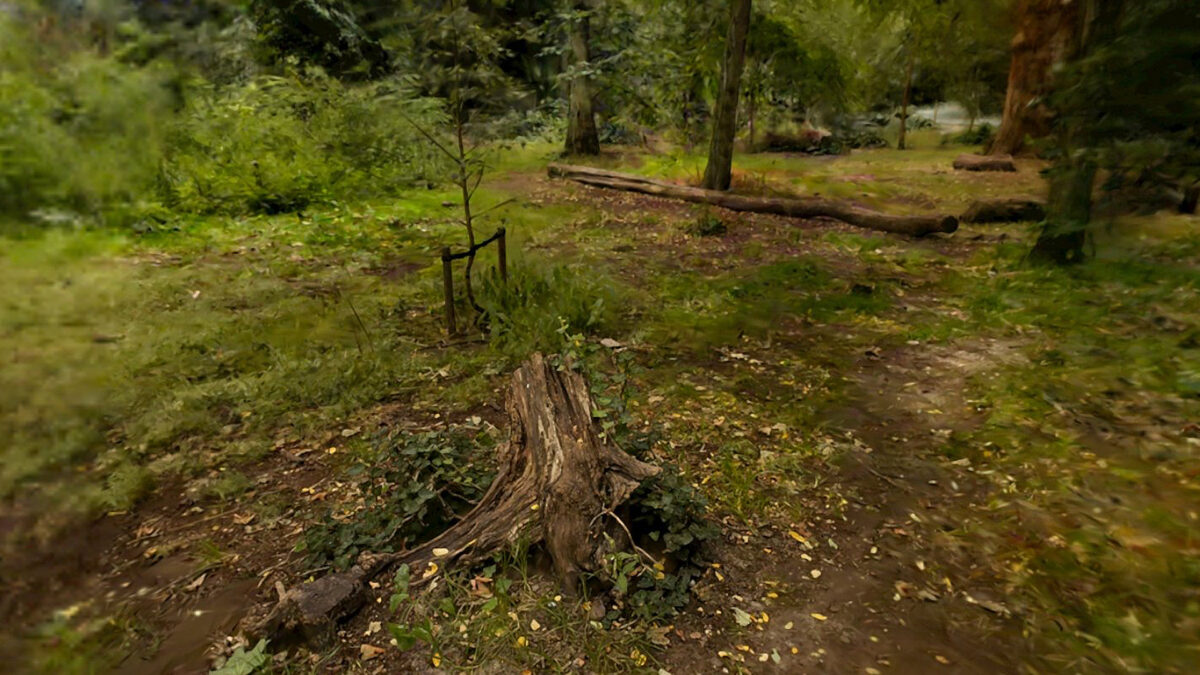Gracia brings Gaussian Splats to Quest 3 and is now officially available in the Quest Store

Gracia is now available via App Lab in the official Meta Horizon Store. The developers claim to have increased the resolution by 50% compared to the previous sideload version.
Gaussian splatting could make the dream of volumetric photos and videos come true. I tried it out using the example of Gracia with Quest 3.
Capturing a scene in the real world and later walk through it as a 3D environment with a VR headset: Volumetric media is an old dream that comes a little closer with Gaussian splatting.
Gaussian splatting is a rendering technique based on machine learning that uses photographs of a real location to create a walk-through digital copy of it. Unlike other immersive formats such as 180-degree movies and Apple's Spatial Videos, these 3D scenes allow for free perspective shifts.
Startup Gracia AI has developed a pipeline that is said to render Gaussian splats 10 times faster than other solutions on the market, allowing them to be displayed on standalone headsets like Meta Quest 3. Their vision is for their Gracia platform to become a YouTube for volumetric content, where Gaussian splats can be easily uploaded, shared, and viewed.
Gracia is available on Steam for PC VR headsets and on Sidequest for Quest 3. I tried out the latter version to find out what Gaussian splats look like in VR.
Gaussian splats on Quest 3: It's early days
After sideloading the program to Quest and starting it, a window with the Gracia website will open. You will need to register for an account, and I recommend doing this on a computer instead of in VR. You can then browse a gallery of volumetric scenes, download them to the Quest headset, and view them in an immersive environment.
The selection of content is currently very limited. At least for Quest 3, there are only a handful of stills available: a cyberpunk art performance called Embyro of the Future and a series of everyday scenes. Only those who use Gracia on the PC will have access to all the content on the platform, including the Gaussian Splats they have uploaded themselves. These will apparently need to be optimized first to run on Quest 3.
The resolution of the available scenes is quite low, and you can sometimes see artifacts and fixed-focus rendering. Quest 3 apparently is already at its limit with that.
Gracia gives a first glimpse into the possibilities of the technology, and it is impressive that the splats are rendered smoothly on the headset. But you can also see that the technology is still in its infancy.
If custom Gaussian splats and most of the other content are reserved for PC VR, the platform will likely remain a niche. Gracia on Quest is an interesting tech demo, but not (yet) something that will motivate normal users to use a Quest 3.
Gracia: First stills, later videos
It's quite easy to create your own splats these days. All you need is a modern smartphone and an app like Polycam, Luma or Scaniverse. I uploaded a homemade splat to Gracia, but I couldn't watch it with Quest 3. I need a PC for that - which frankly isn't worth the effort for me.
Gracia AI has raised $1.2 million in its first round of funding and plans to support volumetric video in the future. Eventually, the startup says, you should be able to walk onto a concert stage or into a UFC ring. But that is still a long way off.
You can download Gracia on Steam for PC VR headsets and on Sidequest for Quest 3. A version for Vision Pro is also in development.
Note: Links to online stores in articles can be so-called affiliate links. If you buy through this link, MIXED receives a commission from the provider. For you the price does not change.